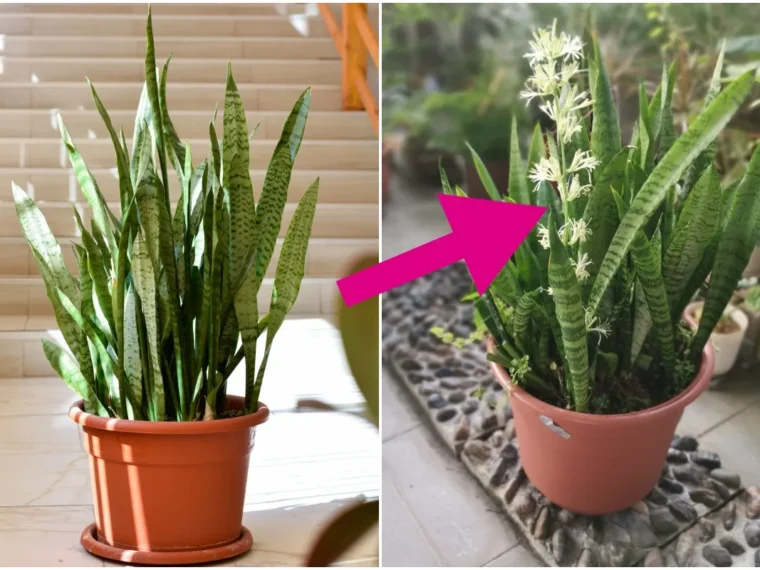Snake plants (or Sansevieria) are beloved for their hardy nature and air-purifying qualities, but seeing one bloom is a rare event. While it’s not easy to get them to flower indoors, creating the right conditions can encourage your snake plant to produce delicate, fragrant white flowers.
1. Understand the Snake Plant’s Flowering
Snake plants are known to bloom when slightly stressed. These blooms usually emerge from a long stalk with small white or greenish flowers. While outdoor conditions make flowering more likely, indoor plants may flower if they experience mild stress from being slightly root-bound, exposed to longer periods of indirect light, or experiencing specific care routines.
2. Choose the Right Pot and Soil
The pot and soil environment play an important role. Snake plants prefer being slightly root-bound, which can actually encourage blooming. Using a small pot can help keep the plant snug. For soil, a well-draining cactus or succulent mix is best, as this type of soil mimics their native environment and prevents waterlogging.
3. Ensure Sufficient Light
Although snake plants are low-light tolerant, they need ample indirect sunlight to bloom. Place them in a well-lit room with indirect light exposure. Morning sunlight, especially in an east-facing window, is ideal. Direct, harsh sunlight can burn the leaves, so if you’re in a particularly sunny location, sheer curtains can help diffuse the light.
4. Adjust Watering Frequency
Snake plants thrive on minimal watering, as they’re prone to root rot if overwatered. During the growing season (spring to early fall), water thoroughly but allow the soil to dry out between watering sessions. In winter, reduce watering even further, keeping the soil barely moist. Avoid misting the leaves, as they don’t need high humidity to flourish.
5. Keep Humidity Levels Low
Snake plants do best in environments with low to moderate humidity, similar to their native regions in Africa. If humidity levels are high, use a dehumidifier or keep them away from humid spots like bathrooms.
6. Fertilize Occasionally
Fertilizing snake plants isn’t always necessary, but a light feeding during the growing season can encourage blooming. Use a balanced, water-soluble fertilizer, diluted to half-strength, and apply it monthly from spring to early fall. Avoid over-fertilizing, as this can lead to excessive leaf growth rather than blooms.
7. Let the Plant Age
Snake plants typically bloom only when mature, so young plants are less likely to produce flowers. Allow the plant a few years to establish, especially if grown indoors. Older plants are naturally more predisposed to flower if their needs are met.
8. Monitor and Address Any Pests
Snake plants are generally pest-resistant, but occasionally, pests like mealybugs or spider mites can infest them. Check the plant regularly and remove any pests promptly. You can treat infestations with a mixture of mild soapy water and rinse the plant under lukewarm water.
Final Note: Patience is Key
Snake plants are naturally slow-growing and may take years to bloom. By maintaining consistent care and allowing the plant to experience slight stress, you’ll create an environment conducive to blooming.
